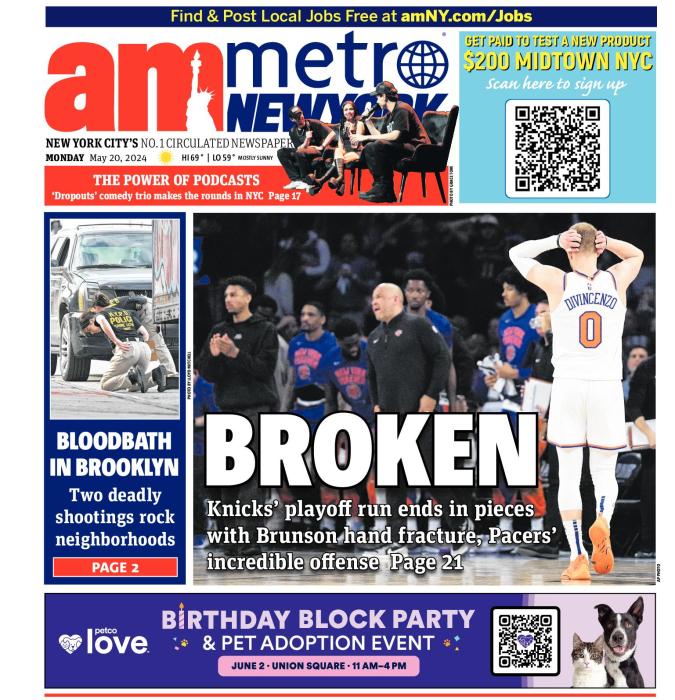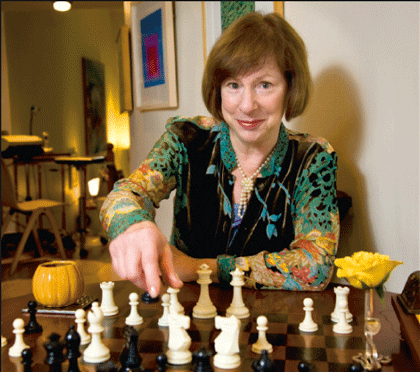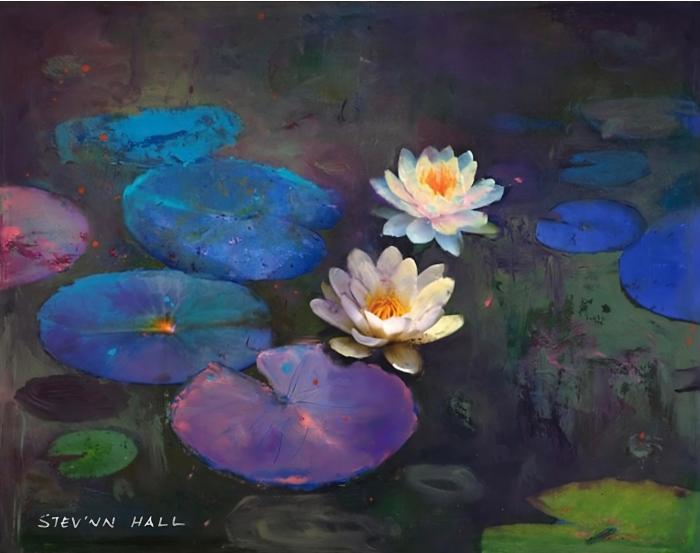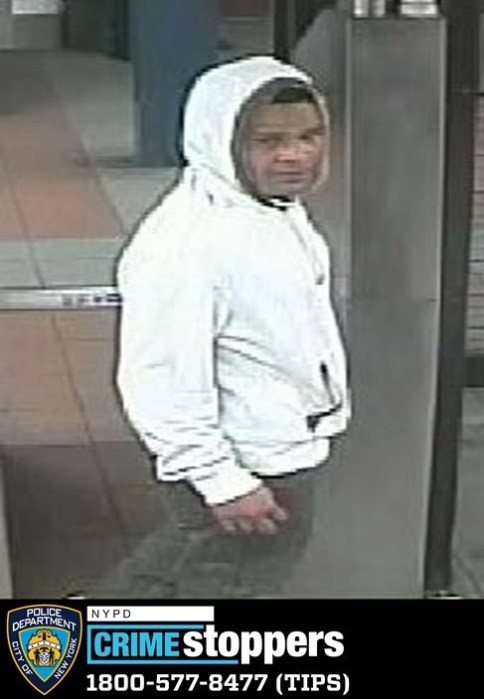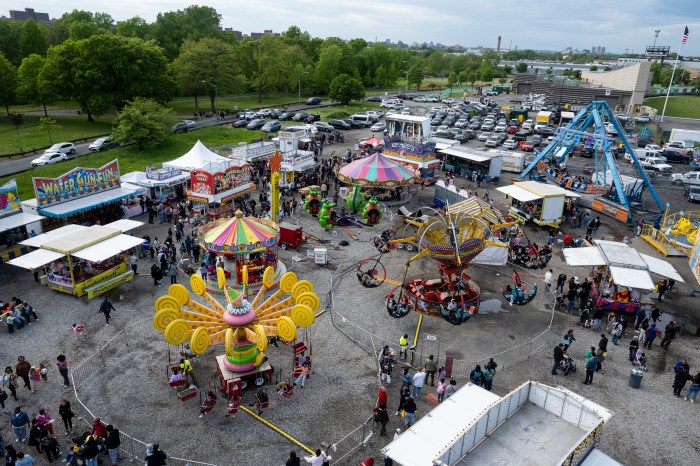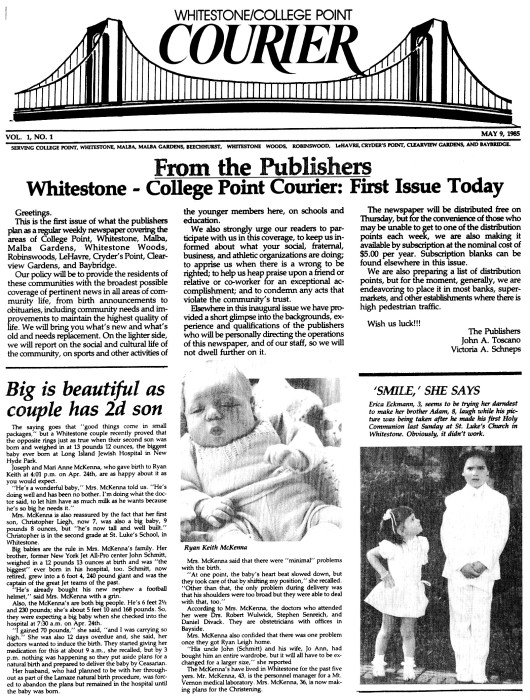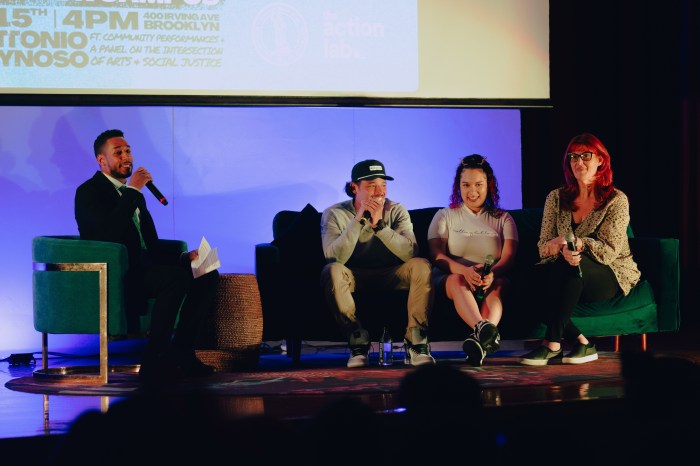By Stephanie Murg
Ringing the doorbell to Nancy Weber’s Chelsea apartment may well change your life. Her cozy home on West 24th Street is the venue of Life Exchange, a performance art project that begins tonight and runs through November 6, during Performa07, the city’s second visual art performance biennial. In short, the Life Exchange is just what it sounds like: you come in with your life and leave with someone else’s.
Organizing and running the project is Wooloo Productions, a Berlin-based art collective who last year made a splash in the New York art world with AsylumNYC, a project funded by performance art institution Franklin Furnace that detained ten U.S. artists in Chelsea’s White Box gallery and had them compete for a three-year visa.
“One of our main themes is the issue of movement and immigration and how these globalizing tendencies are changing society and changing the world as we know it,” says Martin Rosengaard, one of Wooloo’s three core members. “The Life Exchange project doesn’t have to do with the movement of your body across a national border. It has to do with an intimate move, but it still has a lot to do with borders.”
Wooloo’s selection of Weber’s home is no coincidence. She is the first known New Yorker to have conducted a life exchange. In 1973, Weber, then 31, placed an ad in The Village Voice, seeking “to swap her joyful, productive existence with yours for a month.” The “rather disastrous” results of that experiment are detailed in her 1974 book “The Life Swap.”
“When I was 16, my grandmother had Alzheimer’s and disappeared in front of my eyes, yet also in some ineffable way, completely remained herself,” says Weber. “I guess that that was when I first began to wonder what it was in me that was so rock-solid that it would survive the most extreme dislocation.”
Since her life-swapping experiment, Weber has written 22 other books, including romance novels and a pictorial essay on the color red, studied at the French Culinary Institute, worked as a pastry chef at Lot 61, and founded a catering company, Between Books She Cooks. Along the way, she raised a family, and a year and a half ago, moved to Chelsea.
Returning to the idea of a life exchange wasn’t altogether planned. A couple of months ago, she received a call from Rosengaard out of the blue, who explained to her Wooloo’s Life Exchange concept: “Two artists that would have met previously — online but not face-to-face — would walk into a gallery, go through what he calls a spiritual exercise, take off their own clothes and for a while wear the cloak of exchange,” explains Weber. “And then the two people would leave, with each other’s clothes, keys, identity papers, and go off to live each others’ lives.”
He then asked if she’d like to be a part of the project. “I fell all over it,” she said. “I was so excited — first because I instantly liked him, and also by what he went on to tell me about what major explorations Wooloo had done into the whole issue of boundaries. I loved all of that, and I also really appreciated being recognized for what I had done.”
After several more conversations, Rosengaard suggested that rather than conduct the project in a gallery, Wooloo would base the project in Weber’s apartment and two members of the group would live there for the entire project. She eagerly agreed.
Basing the Life Exchange project in Weber’s home, a private space, added an important new dimension. “Just to ring the doorbell and attend you sort of have to go over a boundary,” says Rosengaard. “Usually when you enter an art exhibition, you’re in charge, maybe you’ve even paid to be there, and you can certainly leave if you don’t feel like staying. But here you’ve already lowered your defenses a bit, because you’ve entered a private space.”
For the duration of the project, visitors can enter Weber’s apartment between the hours of noon and 9 p.m. by ringing the doorbell. Once inside, visitors will be guided through interviews and “re-dressing rituals” by Wooloo members, and if the visitor chooses, later leave the apartment dressed in another person’s clothes and carrying that person’s keys and information about that person’s life.
What will happen after that? “Just standing on the street, wearing another person’s clothes and carrying another person’s keys, already the experience is quite powerful,” says Rosengaard. “From there it’s up to the person. They can go straight home and change their lock or do whatever they want.” Wooloo will simply ask participants to keep a diary of their experience and then, if they wish, to share those writings at a post-project meeting they plan to hold in late November.
“Everytime I talk to anybody about the Life Exchange project they kind of roll their eyes and wonder how it would be possible to take on the job of a nurse, for example, if you’re not a nurse,” says Martha Wilson, founding director of Franklin Furnace, a sponsor of the project and the organization that awarded Wooloo its Future of the Present Award in 2006. “Not every life exchange is going to work, and that’s part of the process.”
Wilson is enthusiastic about Wooloo’s approach and the questions their projects address. “In reviewing proposals for projects at Franklin Furnace, there’s a lot of heated discussion that goes on about what values we think are the next generation of values that the art world is concerned with,” she says. “The artists of Wooloo Productions are out there feeling around for what issues are going to be important coming down the pike.”
The goal of the Life Exchange project is that of art itself: to spur thinking, and get people to see things with new eyes. “It’s easy to visit another person’s house. It’s easy to wear another person’s clothes or eat their food,” says Rosengaard. “What’s difficult is to try and understand why this person behaves in a certain way. And this is the core of this project — understanding other people.”
And the project’s start date — Halloween — is no coincidence. In fact, it was Weber’s idea. “I said to Martin that if people are going to end up in each other’s clothes — each other’s costumes — let it be Halloween,” she says. “After all, that’s the one night every year when strangers ring the doorbells in funny clothes.”
